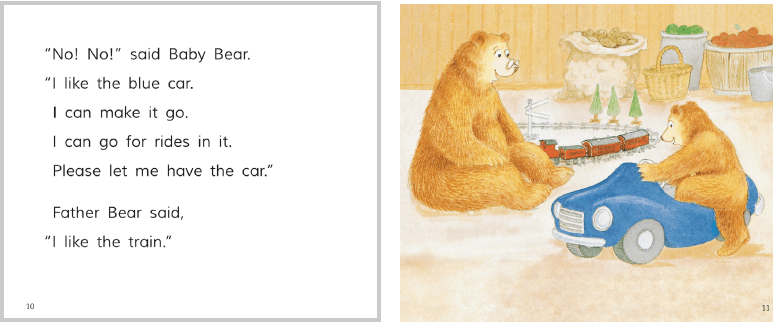Lexile Measures Offer Different But Complementary Information To Book Bands – So How Do They Work?

How could Lexiles affect the books we choose for our primary students?

So, you’ve just bought some new copies of your guided reading favourites. Unpacking them to put in the Blue Band book box, you notice that there is a number in the top right-hand corner of the back cover: 280L. You’ve not seen that before.
The next book you pick up has 320L on it. Confused? Well, there’s no need to be.
Publishers in the UK are increasingly placing a Lexile measure on books. Just as Book Bands use a colour name to code a gradient of challenge for guided reading, so Lexile measures are a number used to represent text complexity. Both have been devised to help teachers choose the right book for the right child or group at the right time.
When we band a book, we have to consider many different challenges for the reader – prior knowledge and experience, language skills, age-appropriate topic and reading attainment. Each of these contributes to how easy or hard a particular book will be.
Banding offers a clear pathway from the simplest of texts to those which are quite challenging, using five judgement criteria: letter-sound relationships, language structure, layout, text structure and use of illustrations. These elements interact to bring the text alive on the page. The Lexile Framework also creates a pathway, but in a different way.
In the Lexile scale, the demands of a text are represented as a number. The lower the number, the less complex the book. That number is calculated using four research-evidenced indicators: decoding, semantics, syntax and language structure, each of which affects readability.
Both indicators and judgement criteria provide a framework through which books can be evaluated for a particular purpose. Interestingly, the two systems offer reciprocal validation.
We selected just a few books from each colour band and got a Lexile measure for each. The average Lexile ranges for each band showed a consistent and systematic rise in Lexile measures, even with a very small number of texts analysed.
Lexile measures in action
Lexile measures assigned to a text offer a specific measure of difficulty, first and foremost for independent reading. So why is this information on a book designed for guided reading?
Lexile text measures are calculated in order to place a book on a scale to facilitate independent reading. But it also has value in guided reading. Guided reading is a teaching pedagogy that involves a teacher guiding a small group of children who demonstrate similar reading behaviours, and therefore can read similar levels of text. Banding is designed specifically for use in this context.
Imagine you’re planning a guided reading lesson with a group of children, all reading within Blue Band. These children are learning to read speech, using the punctuation and sense of meaning to read expressively and to follow who is talking. Your choice of book is influenced by the needs of the children.
First you consider Baby Bear’s Present. This is a Blue Band book with a measurement of 280L.

Let’s unpick the challenges around direct speech in this example.
There are two characters. Baby Bear, the first character, has dialogue sustained over several lines. The reader needs to understand that it is Baby Bear continuing to speak. Then the speech moves from one character to the other. The layout of the page supports that switch, with a space between each character’s dialogue. The change of speaker is clearly supported by having ‘Father Bear’ right at the beginning of the line. This will be helpful for your group, who are in the process of learning how to read dialogue.
However, thumbing through the blue band box, you notice Cows in the Garden. Would this one be better?

Again, there are two characters talking, both pictured. Each piece of dialogue is short, so at first glance, it might look to be easier and therefore a good starting point for your group.
But there’s a greater challenge here. Look at the use of the impersonal pronoun heading up Gran’s utterance. What is the ‘This’ to which she is referring? The reader has to carry the meaning from the previous page (where the cows get in through the fence) to inform an interpretation.
Now look at where Dad speaks. The reader might anticipate that ‘Out you go’ is actually said by Gran, as the reporting clause does not occur until after the first utterance.
Only at this point does it become clear that Dad is not talking to Gran. The repetition of ‘out you go’ is not there just to practise high frequency words, but as a way to create urgency in Dad’s speech and emphasise the meaning of the bold text. Not only this, but the reader has to use the comma to get the juncture correct in ‘Go on, out you go’, or the meaning becomes lost.
The conversation is not building in the same way as in the first example. The reporting clause also includes an adverbial element, adding further challenge.
You have to make a decision: two books in Blue Band, but with very different challenges. Here is where a Lexile measurement can be helpful.
Interestingly, the Lexile measure for the second book is 320L. This means that somewhere in the interaction between the indicators, something is adding complexity.
The two books are evenly matched in terms of semantic and orthographic challenge. But the second one is measured as having greater demand in the areas of syntax and language structure. Therefore, as your group is just beginning to grapple with reading and understanding the inferences that direct speech presents, the right book for this group at this time is probably the first one (at 280L).
Both books fit nicely within Blue Band, but you have to make a choice which involves not only thinking about the band and the Lexile measure, but how near the group is to mastering that skill. This doesn’t mean that you won’t ever use Cows in the Garden. It will be a useful text in a few lessons time, when more of the Blue Band learning objectives around reading speech are in place.
Good choices
Neither a band colour nor a Lexile number alone can make a decision for us. Book choice is much more complex and nuanced than that. In guided reading, we must consider the goal for the learning, where the group is in relation to that goal and where to focus our teaching next. We can’t just think about that in terms of a number or a colour. The children aren’t ‘blue’, any more than they are 320L.
Banding and Lexile measures offer different but complementary information. In combination, they support the fine-grained decisions that we need to make every day in our classrooms.
Sue Bodman and Glen Franklin are editors of Which Book And Why, and are members of the International Literacy Centre National Leadership team based at the UCL Institute of Education. Both have a background in primary teaching.
Children can take a Lexile-linked assessment and receive a Lexile measure. This allows readers to be matched to books to ensure positive independent reading experiences. To find out more visit lexile.co.uk or email gbudgell@frattempo.co.uk (UK) or jturner@lexile.com (US).











